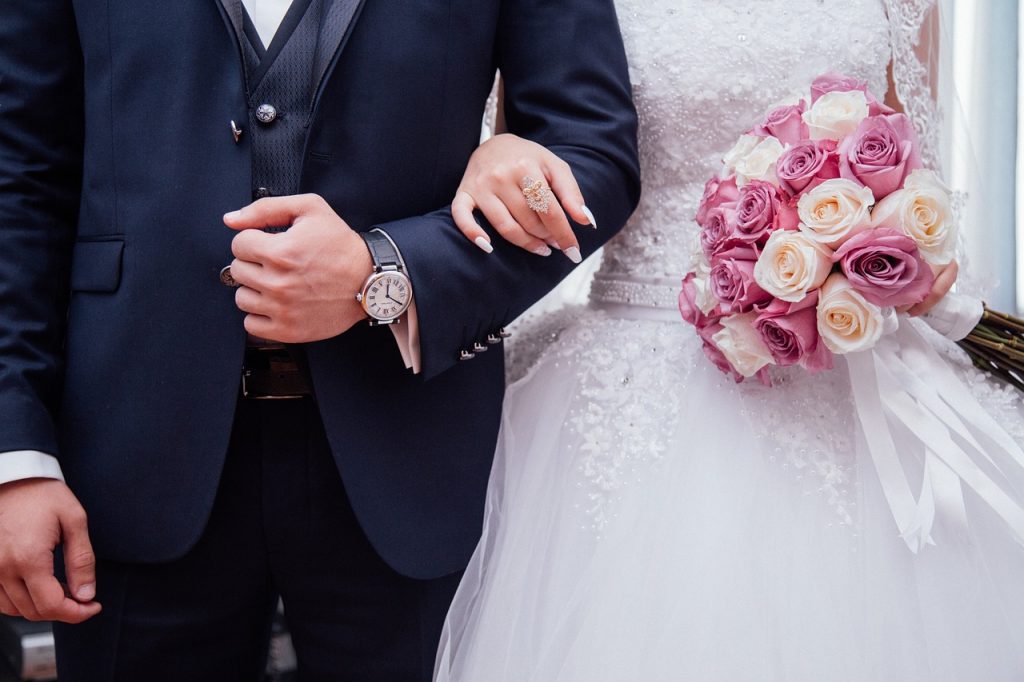How to design and send out RSVPs for your wedding without stress

Sending and responding to wedding RSVPs is often glossed over, sometimes resulting in misunderstandings and more stress than necessary. If you are planning your first wedding, it is natural to be unfamiliar with proper RSVP etiquette. Don’t worry – we have put together a handy guide for you!
RSVP etiquette for hosts
Well-planned RSVP cards sent in advance can save you a lot of stress. And, after all, no one should be (overly) stressed before their own wedding! Knowing the guest list and all the details will allow you to tie up loose ends and enjoy your ceremony to the fullest.
When should you send the RSVPs?
You should give your guests plenty of time to decide if they can make it to your ceremony. As a rule of thumb, start sending RSVPs at least six weeks prior to the wedding. Ideally, you should do it even earlier – up to eight weeks before. Ask your guests to decide at least two weeks before the wedding so you have time to adjust your plans accordingly.
What about destination weddings? If your guests have to travel a great distance for your ceremony, the rule remains the same. Six to eight weeks before the event should be enough for them to decide and respond to the invitation. However, start sending out Save-the-Date cards much earlier – up to a year in advance. Remember that traveling requires a lot of planning and getting affairs in order.
How to handle the non-responders?
If you are sending out RSVPs, it is safe to assume that you will have to deal with at least a few non-responders. And it will be frustrating – all you are asking is to check a box and send the letter back!
We know you want everything to be in order (including meal and seating plans) but remember that sometimes random incidents get in the way. Your letter may have gotten lost in the mail (if you chose traditional RSVP cards), or the person simply forgot to write back.
Give the non-responders a few days. There’s a chance they sent letters at the last minute, and you will get them a little late. If, after a week or so, you still don’t know who will and who won’t be attending – start asking. It’s better to call (that way, you will get an answer), but if you can’t reach someone – text or e-mail.
What to include in your RSVP card?
Now is the time to design or buy the RSVP cards for your wedding! Whether you have chosen a traditional or online RSVP, content is just as important as looks. We have put together a short checklist of things that should be included in a good RSVP.
- Headline. The word “RSVP” comes from a French phrase “répondez s’il vous plaît” – “please respond”. It’s a good headline for your card (especially written in an elegant and unique font), but you can also write something like “please reply” or “kindly reply”.
- RSVP due date. Give yourself some time to adjust your wedding plans to the final number of attendees and to deal with potential non- or late-responders. Ideally, you should have your guest list ready two weeks before the ceremony. State the RSVP due date clearly on the card.
- Wedding date. You have probably already written the date of the ceremony on Save-the-Date cards or invitations, but it doesn’t hurt to repeat this information.
- Accept/decline checkboxes. The most popular (and easiest) way to confirm who will attend your wedding.
- Space to enter the number of attendees. This is a must if you want your guests to bring their plus ones or families. If you don’t want your guests to bring children , make this clear in the RSVP by addressing it to the adults only.
Optionally, you can also include entrée options in the RSVP, for example, meat, fish, and vegetarian. We also advise you to include a pre-stamped envelope with your RSVP letter, which will make it even easier for your guests to respond.
RSVP – online or traditional?
Sending RSVPs online is becoming more common these days. Some people mix them with traditional cards, while others choose to send only emails. What should you do?
As with everything, it’s up to you. Online RSVPs are a greener and more economical option. If you choose them, you won’t have to buy and/or print physical cards, which will save you time and money. Some guests also find it easier to respond to an online RSVP than to send a letter.
On the other hand, you should do what is best for you and your attendees. If you are inviting older guests (e.g., parents, grandparents), it may be difficult for them to respond to online RSVPs, and they will be more comfortable with traditional paper cards.
If you are not sure, you can always mix up your options! You don’t have to send both versions to every guest. Some people send RSVPs online but keep the paper ones for guests who may prefer them. The choice is yours!
